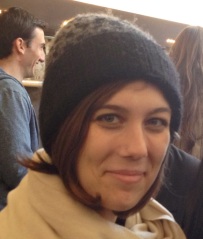Remember the days when your resume was enough to get your foot in the door at a company? In 2013 if you are a Creative, chances are your portfolio is more important than your resume. As a recruiter I’m finding that, especially with recent advancements in digital media, having a resume just isn’t enough anymore. Your portfolio is your visually attractive representative, which should speak volumes about you. Ya know, kind of like an online dating: a hybrid of content and images.
Here are a few recurring issues I see with portfolios and how to fix them:
Thing 1: “The User Experience”
User Experience (or UX) is exactly how a person feels about using a system. For example, ever try to purchase concert tickets, or airfare online and can’t find anything you are looking for? How do you feel about that? Probably not motivated to go back to that website, right? Here’s the deal: your goal when creating a portfolio of any kind is to make it as easy as possible to navigate through and get to the areas you are looking for.
Thing 2: “I’m Ready For My Close Up”
Copywriters, listen up. I’m entering your portfolio to review the concepting behind the taglines, short form, or long form copy you have written. Screen shots in super small font are not only frustrating for the individual, but raise concern that you are “trying to hide” your work and just showcase the prestigious client/brand. If I need to move reeeeeeally close up to my computer screen, my first constructive criticism will be to ask you to change the font.
Thing 3: “A Little Make-Up Never Hurts”
Hi again, Copywriters. The reality is this: we are looking at your portfolio to see your content and how conceptual you can be. But a little visual stimuli can go a long way (remember, we want our viewers to have a positive user experience, right?). So, I would definitely encourage you to pump in some color, contrast, images, logos, whatever you think is going to best showcase your sense of individual style.
Thing 4: “Can I Have a Bedtime Story, Please?”
Well hello, Information Architects and UX professionals. In addition to seeing samples of your user personas, workflows, wireframes and sitemaps, I want to see a storyboard. Talk me through the process of “what goes on.” How did you get from the requirements to the end product? Everyone loves a good story.
Thing 5: “Separation Anxiety”
Okay, this is my major pet peeve and it ties into Thing 1. If I’m looking at Copy or Art samples in the Health and Wellness category, it would be a time saver if there are labels which differentiate the Health Care Professional work (HCP) and the Direct to Consumer (DTC) and Director to Patient (DTP) work. Why? Because even though recruiters analyze portfolios, we kinda, sorta need you to spell it out for us. That’s why you are the awesome, talented Creative and we are the Talent Finders. Make it easy for us! Group your pieces in the Health and Wellness category, but differentiate the goods.
So, what have we learned today, class? Make your content easily readable, add a little panache, talk us through your work and differentiate your materials. Why? Because the end goal is to engage your audience and create a positive user experience which will increase the number of clicks your portfolio receives every day.
For more information on job opportunities, portfolio advice, or interview skills, connect with me on Linkedin and get on my radar!

jana kleinman graduated from suny buffalo in 2005 with a ba in psychology and concentration in marketing. she began her career in media buying and planning at Universal McCann and Cline, Davis, Mann in nyc before discovering her true calling as a talent scout for advertising and media agencies. jana pursued a bs from the school of psychology and education at touro while working full time as a recruiter. with 6+ years of talent networking experience, want to get on jana’s radar? connect with her on Linkedin.



 evan burton is a writer from brooklyn. he thinks there’s no metaphysics on earth like oysters and champagne. you can reach him at evan@evanburtoncreative.com
evan burton is a writer from brooklyn. he thinks there’s no metaphysics on earth like oysters and champagne. you can reach him at evan@evanburtoncreative.com


















